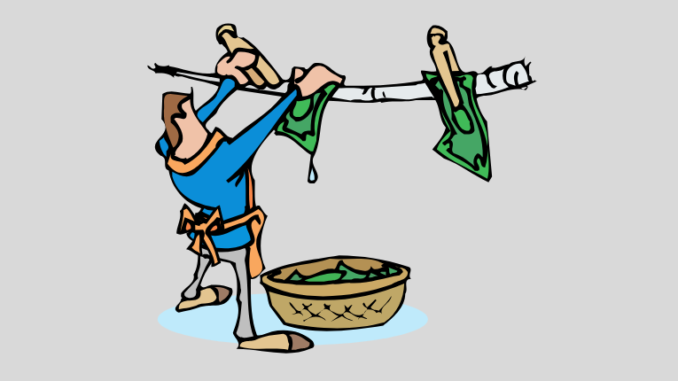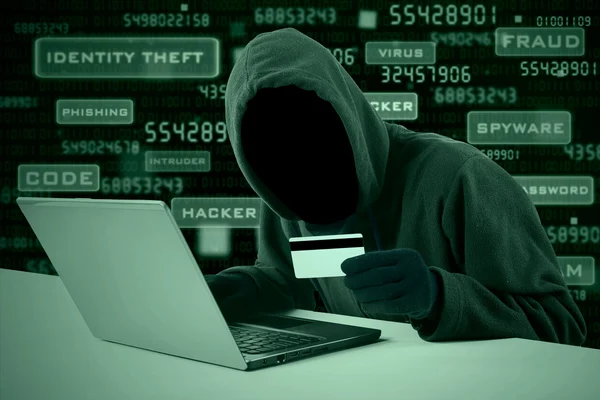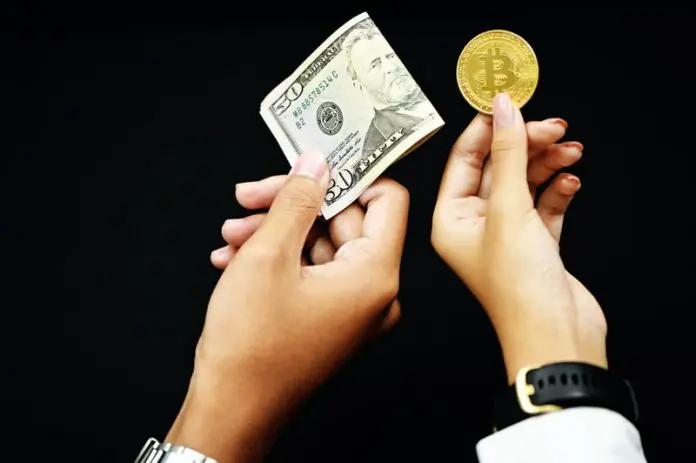
Dark Web is an encrypted corner of the internet, where anonymity reigns supreme, and identities are masked. It’s a realm that fascinates some, terrifies others, and intrigues us all. But beneath its mystique lies a darker reality – where criminals exploit this cloak of secrecy to engage in nefarious financial transactions.
In the mid-90s, the U.S. Naval Research Laboratory created an encrypted and anonymous network for their spies to communicate securely. They called it the “dark web” or “darknet.” But, like any unfinished project, it was eventually abandoned. Then, a group of tech-savvy activists revived it in 2002 as a nonprofit organization focusing on privacy and human rights. They devised a fancy name for their anonymous communication browser – TOR, or “The Onion Router.”
While the intentions were noble, the dark web’s cloak of anonymity also attracted some unsavory characters. Over time, it became a hotspot for various criminal activities, including the illicit financial practices we will explore.
Let’s understand the dark underbelly of the Dark Web and its intricate involvement in money theft and money laundering schemes. It’s time to lift the veil on this hidden world and empower ourselves with the knowledge to combat cybercrime and protect our financial ecosystem.
Dark web: what is it, and how does it work?
The dark web is a hidden part of the internet that can only be accessed through special software that protects the identity and location of its users. It is not the same thing as the deep web, which contains mostly benign sites not indexed by search engines, such as password-protected e-mail accounts, certain parts of paid subscription services like Netflix, and sites accessible only through online forms. The dark web is only a small fraction of the deep web, but it requires custom software to access its content.
Types of services and products on the dark web
The dark web is a vast and unsettling realm, harboring numerous online marketplaces that peddle a wide array of illicit goods and services. From drugs like cannabis, cocaine, and prescription pills to weaponry ranging from guns and knives to even dangerous explosives and nuclear materials – you name it; they have it. These items often find their way from war zones or get stolen from military bases, adding to the chilling allure of the dark web’s underbelly.
But that’s not all. The dark web is a digital den for cyber criminals too, offering a treasure trove of hacking tools like malware, ransomware, botnets, and DDoS attacks. The potential harm these tools can inflict is immense, posing grave risks to individuals, businesses, and even entire networks.
There is, however, a more grim reality to face. The dark web is also a marketplace for stolen data, with personal information like credit card numbers, bank accounts, identities, and passwords readily available for sale. Even more disturbingly, it serves as a platform for heinous crimes like human trafficking and child pornography, exploiting innocent lives for unfathomable gains.
Dark Web Risks and Potential Threats:
The Dark Web is a mysterious and shadowy realm that operates beyond the reach of conventional search engines. It thrives on anonymity and encryption, providing a haven for many criminal activities.
According to the 2019 Global Risks Report by the World Economic Forum, data fraud and cyber-attacks are among the top global risks, and the Dark Web plays a significant role in these threats.

Let’s explore some of the most notorious online financial crimes facilitated by the Dark Web:
- Phishing: This devious attack preys on unsuspecting users, enticing them with fraudulent communication like fake emails, SMS, or websites. Victims innocently enter their credit card details, unknowingly providing criminals access to their financial accounts.
- Malware: The Dark Web hosts various malware designed to infiltrate networks and devices like computers or mobile phones. These potent viruses sift through data and compromise devices, giving cybercriminals access to sensitive financial information.
- Identity Theft: The stealing of personal data is a pervasive threat on the Dark Web. Criminals abscond with physical IDs and utilize stolen information like names, addresses, and birthdays to create fake online profiles and accounts.
- Money Laundering: The Dark Web becomes a platform for money laundering, enabling the transfer of illicit funds to anonymous accounts. Thieves can securely hide their ill-gotten gains, evading detection through complex digital transactions.
- Card Fraud: Stolen credit card information is a lucrative commodity on the Dark Web. Hackers trade this sensitive data obtained from compromised networks, allowing criminals to make fraudulent purchases or access financial resources.
A striking feature of Dark Web transactions is the use of virtual currencies, increasing the risks of money laundering. For instance, Bitcoin, one of the most common virtual currencies, records all transactions in a public ledger called “The Blockchain.” While it conceals user identities, the transactions themselves are transparent. To maintain anonymity, users employ TOR (The Onion Router), which routes encrypted messages through a distributed network of randomly selected proxy servers.
The Dark Web poses serious dangers to cybersecurity and financial stability. As the online underworld continues to evolve, individuals and organizations must stay vigilant, educate themselves about potential threats, and employ robust security measures to safeguard against the lurking risks of the Dark Web. Awareness and proactive action are our best defenses against this murky digital realm.
Money laundering: what is it and how does it work?
Now that we have explained the dark web and how it works, let’s move on to the other side of the equation: money laundering. Money laundering conceals illicit funds’ origin, ownership, or destination. It involves moving money through various channels and intermediaries to make it appear legitimate and avoid detection by law enforcement or regulators. Money laundering is a crime and a key enabler of other crimes, such as terrorism, corruption, human trafficking, and tax evasion.

How the Dark Web Enables Money Laundering
The dark web offers a haven for money launderers, providing several advantages that make concealing their ill-gotten gains and eluding authorities a seemingly effortless task.
- Anonymity: Dark web users can shroud their true identities and locations using anonymizing software that encrypts their data and bounces it through multiple servers worldwide, making tracing their transactions or communications a daunting challenge.
- Encryption and Special Domains: Dark websites employ encryption to safeguard their content and transactions from prying eyes. They also adopt unique domain-name extensions like “.onion” for the Tor network and “.i2p” for the I2P network, accessible only through specific browsers capable of decrypting them.
- Restricted Access: These sites remain invisible to traditional search engines, like Google or Bing, necessitating users to possess their precise addresses or acquire them from sources like forums, chat rooms, or word-of-mouth. Some sites even require invitations or passwords for entry.
- Illicit Markets: Hosting various online marketplaces, the dark web becomes a bustling hub for trading illegal goods and services, from drugs and weapons to hacking tools and stolen data. These markets attract buyers and sellers seeking to circumvent legal risks and taxes tied to their transactions.
- Cryptocurrencies: Money launderers on the dark web frequently employ cryptocurrencies such as Bitcoin, Monero, or Zcash to conduct their transactions. These digital currencies operate on decentralized networks with encryption techniques, ensuring anonymity, speedy transfers, and low fees for cross-border transactions.
Why Prefer the Dark Web?
Money launderers gravitate towards the dark web for diverse reasons, each serving unique objectives, risks, and opportunities.
Most rely on the dark web to shield their financial dealings from authorities or creditors who might attempt to seize or freeze their funds. The anonymity it offers provides a perfect cover for their activities. The dark web acts as a refuge, enabling money launderers to elude detection by law enforcement and intelligence agencies keen on tracking or monitoring their operations. It also allows them to bypass sanctions or blacklists that could otherwise restrict their access to specific markets or jurisdictions.
From accessing cheaper, high-quality goods or services to exploiting exchange rate differences or tax havens, the dark web opens up opportunities for them.
Case Studies of Dark Web Money Laundering Schemes
Throughout history, the dark web has witnessed numerous high-profile money laundering schemes that have captured public attention. Here are some notable examples:
- DeepDotWeb: This notorious news site was a gateway to various dark web marketplaces. The site’s operators received substantial kickbacks in cryptocurrencies, amounting to over $8 million between 2013 and 2019. They employed shell companies and offshore accounts to launder their funds but eventually faced arrest and legal repercussions.
- AlphaBay: As one of the largest dark web marketplaces, AlphaBay facilitated the trade of drugs, weapons, hacking tools, and stolen data. The site’s operator raked in more than $23 million in commissions from 2014 to 2017. Using a combination of shell companies, offshore accounts, and cryptocurrencies, he successfully laundered his funds until his arrest in 2017.
- Silk Road: Perhaps the most infamous Silk Road was the pioneering dark web marketplace offering a range of illegal goods and services. The site operator earned over $18 million in commissions from 2011 to 2013, leveraging Bitcoin and other methods to launder his money. However, justice caught up with him, leading to his arrest and a life sentence.
These case studies exemplify the tight-knit relationship between the dark web and money laundering, underlining law enforcement and regulators’ immense challenge in combating this issue.
Growth of Dark Web Market Sales
The Dark Web has witnessed a remarkable surge in market sales, fueled by the anonymity and privacy it offers. According to research by The Economist in 2016, the drug trade experienced exponential growth, with transactions surging from $17 million in 2012 to nearly $180 million in 2015, marking a staggering increase of 1000% in just three years.
The market diversity has also expanded, with a mix of counterfeit products, hacking resources, weapons, and other illicit items making up a significant portion of the offerings.
Untraceable digital assets, particularly Bitcoin, have become the primary means of payment on the Dark Web. Cryptocurrencies offer a layer of security and anonymity that traditional fiat currencies lack.
This shift has enabled criminals to carry out transactions relatively easily and has contributed to expanding the Dark Web’s financial activities. In 2019, Dark Web market sales using cryptocurrencies grew by a substantial 70% compared to the previous year, reaching a total value of $790 million. By 2020, this figure skyrocketed to an astonishing $1.7 billion.
Coin Mixing: A Tool for Money Laundering:
To further obfuscate their transactions and ensure anonymity, criminals on the Dark Web utilize coin mixing services such as SmartMixer or Dark Wallet. Coin mixing, known as coin tumbling, involves blending a user’s cryptocurrency transaction with other random users. This process effectively hides the origin of the funds and makes tracking more difficult for authorities. Dark Wallet, a notable creation by Amir Taaki and Cody Wilson, is prominent in facilitating such coin-mixing practices.
Crackdown on Coin Mixers:
While coin mixers have been a popular tool for money laundering on the Dark Web, authorities have been actively targeting and shutting down these services. BestMixer.io, Bitcoin Fog, Helix, and Blender.io are some examples of coin tumblers that have faced closure due to their involvement in facilitating money laundering activities. Governments and law enforcement agencies increasingly take measures to curb these illicit practices and hold those responsible accountable.
Conclusion
In conclusion, the Dark Web’s association with money laundering unveils a disturbing reality. Driven by technological advancements and the rise of cryptocurrencies, its economy has undergone significant changes. Dark Web market sales, especially in the drug trade, have experienced exponential growth, exploiting the allure of anonymity for criminals.
Cryptocurrencies, notably Bitcoin, have become the preferred currency for Dark Web transactions, adding an extra layer of secrecy. Coin mixing services like SmartMixer and Dark Wallet have enabled money laundering, making tracking difficult for law enforcement.
Yet, authorities are actively countering these activities, taking proactive measures to shut down coin mixers and disrupt illicit fund flows. However, innovative money laundering methods present ongoing challenges.
The fight against Dark Web money laundering demands continuous collaboration between law enforcement, cybersecurity experts, and regulatory bodies. Raising awareness about Dark Web dangers and promoting responsible online behavior is vital to mitigate these criminal activities.

Leave a Reply